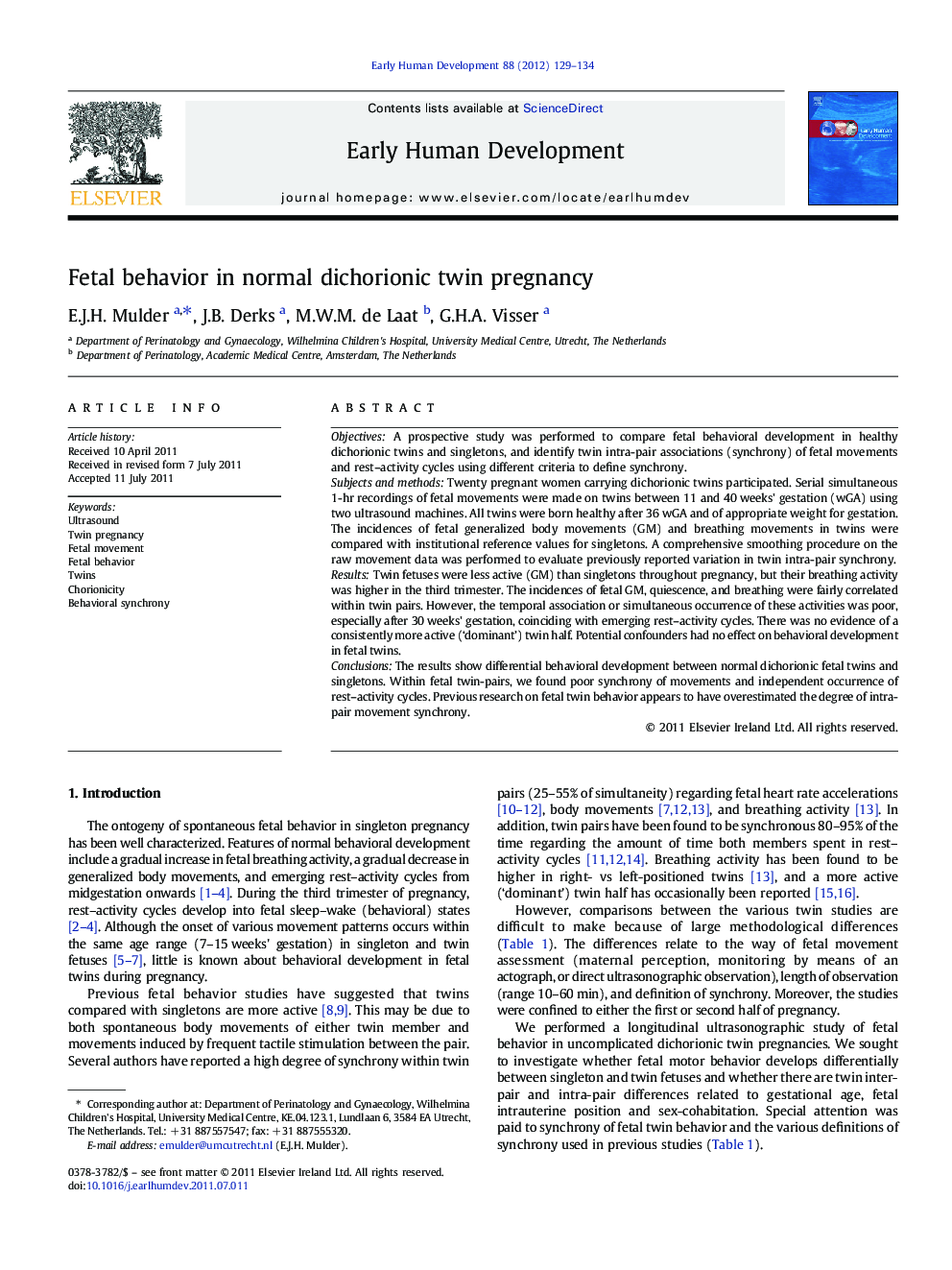| Article ID | Journal | Published Year | Pages | File Type |
|---|---|---|---|---|
| 3918422 | Early Human Development | 2012 | 6 Pages |
ObjectivesA prospective study was performed to compare fetal behavioral development in healthy dichorionic twins and singletons, and identify twin intra-pair associations (synchrony) of fetal movements and rest–activity cycles using different criteria to define synchrony.Subjects and methodsTwenty pregnant women carrying dichorionic twins participated. Serial simultaneous 1-hr recordings of fetal movements were made on twins between 11 and 40 weeks' gestation (wGA) using two ultrasound machines. All twins were born healthy after 36 wGA and of appropriate weight for gestation. The incidences of fetal generalized body movements (GM) and breathing movements in twins were compared with institutional reference values for singletons. A comprehensive smoothing procedure on the raw movement data was performed to evaluate previously reported variation in twin intra-pair synchrony.ResultsTwin fetuses were less active (GM) than singletons throughout pregnancy, but their breathing activity was higher in the third trimester. The incidences of fetal GM, quiescence, and breathing were fairly correlated within twin pairs. However, the temporal association or simultaneous occurrence of these activities was poor, especially after 30 weeks' gestation, coinciding with emerging rest–activity cycles. There was no evidence of a consistently more active (‘dominant’) twin half. Potential confounders had no effect on behavioral development in fetal twins.ConclusionsThe results show differential behavioral development between normal dichorionic fetal twins and singletons. Within fetal twin-pairs, we found poor synchrony of movements and independent occurrence of rest–activity cycles. Previous research on fetal twin behavior appears to have overestimated the degree of intra-pair movement synchrony.
